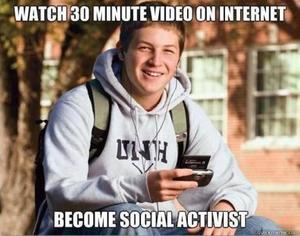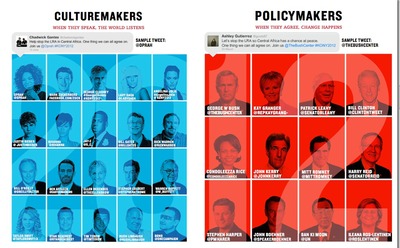Otaku Culture in a Connected World: An Interview with Mizuko Ito, Daisuke Okabe, and Izumi Tsuji (Part Two)
/A recurring theme in the book centers around Otaku expertise. At times, it seems as if "geeking out" is perhaps the defining trait of the Otaku, while the space of interest-driven participation is more expansive than we generally consider in talking about American fandom. As several of the authors suggest, unlike the accounts we have in the west of subcultures as a form of working class resistance, the Otaku is often seen as a rejection within rather than outside the establishment. How do we explain the relations between Otaku expertise and subcultural resistance?
Izumi:
This issue links back to what we were discussing earlier about the origins of otaku culture. I would say that today's otaku culture can't be described as subcultural resistance, and is really something different. The period after WWII and the student protests of the sixties saw the the defeat of forms of resistance associated with upper class young men, and their power of imagination had nowhere to go except to fictional worlds. This was the origin of otaku. That's the process through which otaku culture became the destination for upper class men who fell of the status ladder. It follows that the origins of otaku culture can be found in elite culture, rather than cultures of resistance. Further, when the student protests, the focus of intergenerational warfare at the time, were defeated, there was the perception that cultures of resistance were impossible in this society. After the seventies, those who weren't able to find a place for themselves in the rising consumer culture came to be called otaku. This is a convoluted way of saying that otaku culture can't really be described as a culture of resistance.
Daisuke:
When I interview otaku college women in their twenties, they're very conscious of "real-ju" communities [girls that have lively "real life" social lives], "legitimate" girl communities, and "gal-like" girl communities [street savvy fashionistas], and talk about how "these communities are different from us." When they talk about other kinds of women, they do it in a self-deprecating way, that disparages themselves. I feel like women otaku communities are being constructed interactively with real-ju and gal girl communities, and isn't so much an issue of subcultural resistance. (Though if you speak to women otaku they will describe real-ju and gals as mainstream culture.)
Mimi:
It does seem like different clusters of otaku have different orientations towards subculture and resistance. Izumi draws out the important point that the early origins of otaku culture can be found in train clubs at elite universities, and a kind of upper class nerd masculinity. With the growth of girl otaku culture in the eighties and nineties, however, I think the focus shifted to more lowbrow media like anime and manga and a stronger working class orientation. As Daisuke suggests, for these young women, it is about carving out alternative spaces for subjectivities that are different from normative masculinities or femininities and more mainstream status hierarchies. When we turn to the case of anime fans in the US, the situation is different still, where as Lawrence Eng writes, otaku are "reluctant insiders" who have a marginalized but generally middle class subjectivity. In many ways, the otaku in the US have some similarities to the early otaku cultures in Japan, in that they tend towards well educated middle class youth who don't fit into the mainstream and "popular" gender dynamics, and are engaged in more of a subculture of appropriation rather than of resistance to power.
A key contribution of the book is its attention to gender-issues. How do women fit into Otaku culture? To what degree have they sought to define their own space and identities apart from those of male participants? What differences exist between the role of women in different forms of Otaku cultural production?
Daisuke:
Fujoshi [women otaku] often say, half-jokingly that "Society didn't create porn for women so we had to make our own." Romantic topics are a big part of women's interests and consumption, more than you see with men's content. Boy love content is an extension of this interest. Because they are women who are proactive about consuming romantic content, they are a good fit with otaku culture.
Izumi:
Even in the early years, I think there were women otaku. As Azusa Nakajima writes in Communication Zen Shoukou Gun [All Communication Symptoms Group], there were small numbers of women in the eighties and nineties who were readers of boy love genres in magazines like JUNE. This period was one where a women-centerd consumer and dating culture was at its peak, and there was no way that otaku with an interest in fantasy could be in the mainstream.
After 2000, however, we started to see consumer culture starting to loose its sheen with the bad economic times and declining interest in dating culture. Otaku culture began to gain attention as an alternative way of having fun. One symbol of this was the boom around Densha Otoko [Train Man] a popular story of a young otaku who was able to navigate a romantic relationship with the support of an anonymous online forum. After that, suddenly otaku had an image makeover.
Among women, the environment has shifted to become much easier to come out of the closet as otaku. Until recently, there was the stereotype that otaku were all young men who couldn't get a date, but more increasingly, women also began to feel that they were also otaku and started to claim the term. That's when you saw the blossoming of female otaku culture. Although male and female otaku are both a bit socially inept and have an interest in fantasy, what kinds of fictional worlds they pay attention to are different.
When male otaku look to fictional worlds, they focus on specific characteristics and components of beautiful girl characters, such as the shape of their face, or sexy body parts. This is why, as Azuma describes, they engage in "database consumption" in engaging with these different components. Women, however, rather than focusing on these individual parts, focus on the relationship between characters, such as who is dominant and submissive or the types of romantic pursuit, drawing more attention to the story and environments of the characters.
Because of these differences, female otaku started to identify themselves with the ironic term "fujoshi" [rotten women], and today fujoshi culture is in many ways more active then male otaku culture. One indicator of this is the fact that at Comiket (the largest fan comic convention in Japan), the first two days are centered on female content, and the last and final day on mens' content.
Another real strength of this book is its focus on cultural geography, on the "scenes" where Otaku culture gets produced and consumed. How might we understand the place of Akihabara in creating and sustaining Otaku culture?
Daisuke:
When I talk to young college student otaku in their twenties, a suprising number of them go to Akihabara. They'll go to get some electronic parts, materials to build their own anime figures, or to play card games in the Kentucky Fried Chicken there. And of course there are times when they go to purchase consumer electronics or to go to a maid cafe. It's not necessarily, however, because Akihabara is sustaining the core of otaku culture. It feels to me like young people are consuming Akihbara as source material for their communication. If we need to get electronic parts, we might as well go to Akihabara! Or if we're going to play card games together, how about we do it in Akihabara.
Izumi:
I also agree that Akihabara doesn't actually directly sustain otaku culture. It's already losing its centripetal force as the center of otaku culture. One reason is that Ikebukuro's Otome Road has become a different center of female otaku culture. Another reason is the rise of social media, which has led to otaku gathering more in online space rather than in real life.
Originally, as an electronics district producing models and machines, it was a place for science-oriented young men to gather before it was a place for otaku. (The mecca of train otaku's Transportation Museum was located there until 2005 too.) That was the basis for it transforming into an otaku mecca from the later nineties through the mid 2000s. After that, stores selling hardware starting converting to maid cafes. In this way, stores shifting from selling hardware and things to selling communication as a way of making Akihabara distinctive, and suddenly the sense of place became much more lightweight. Now with the growth of social media, Akihabara has lost its central role as a gathering spot for otaku.
Mimi:
I've also noticed a lot more mainstream media attention to otaku culture and Akihabara. When you go to Akihabara these days, it seems like there are more tourists and mainstream folk wanting to consume and observe an exotic subculture rather than the place being dominated by actual hardcore otaku. It feels like a theme park for fan culture, which is fun in a way, but also different from being the real core site of otaku activity. Ikebukuro and Nakano still have a bit of that more closeted and subaltern feel to it that Akihabara used to have though, so maybe the scene is just evolving to accommodate more variety in how people want to engage in otaku culture.
Mizuko Ito is a cultural anthropologist of technology use, focusing on children and youth's changing relationships to media and communications. She has been conducting ongoing research on Kids' technoculture in Japan and the United States, and she is coeditor of Personal, Portable, Pedestrian: Mobile Phones in Japanese Life, coauthor of Hanging Out, Messing Around and Geeking Out: Youth Living and Learning with New Media, and author of Engineering Play: A Cultural History of Children's Software. She is professor in residence and MacArthur Foundation Chair in Digital Media and Learning at the University of California, Irvine.
Diasuke Okabe is a cognitive psychologist specializing in situated learning theory. His focus is interactional studies of learning and education in relation to new media technologies. He also conducts research on Japanese anime and manga fan culture. He is co-editor of Personal, Portable, Pedestrian: Mobile Phones in Japanese Life and a lecturer at Tokyo City University.
Izumi Tsuji is a sociologist specializing in the sociology of culture. He has conducted extensive research on Japanese fan culture, including a study of fans of young idol musicians and train otaku. He is coauthor of Sore Zore no Fan Kenkyuu-I Am A Fan, a book on Japanese fan culture. He works as an associate professor at Cho University in Japan.



